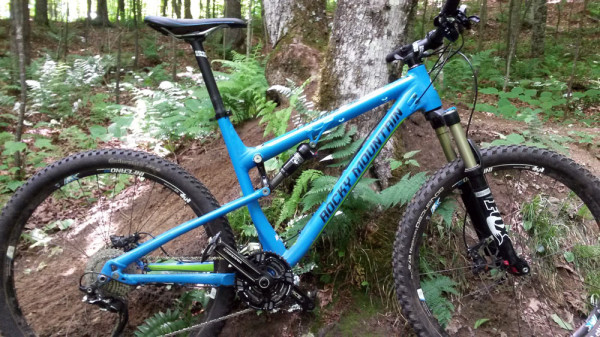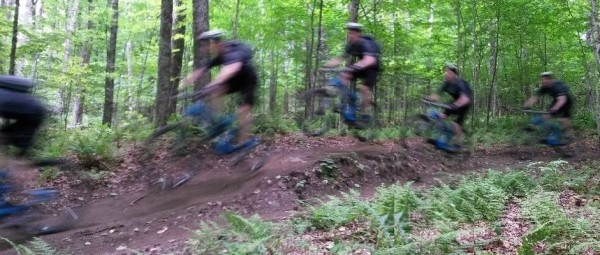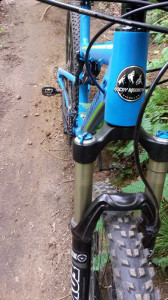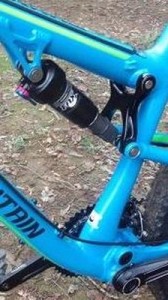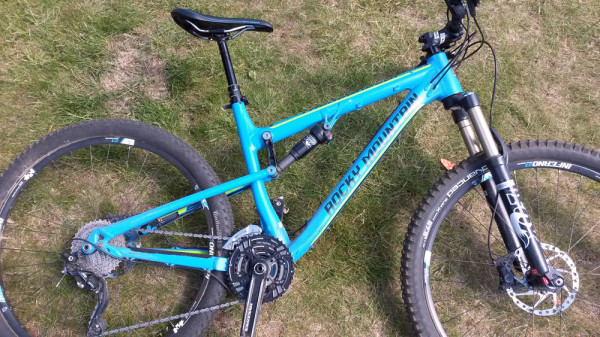Over the last couple years the 27.5 shorter-travel (115-130mm) platform has been blurring the lines between XC and Trail categories. Rocky Mountain’s Thurnderbolt is designed to handle the rowdy side of XC riding, and is a capable setup for almost everything shy of Enduro racing.
The aluminum frame has four available build specs, and I took the 2nd tier 750 ($3,300) on extended rides at NEMBAfest. Vermont’s flowy Kingdom Trails and the efficient Thunderbolt were a perfect match, allowing me to ride all day in comfort, climb without pedal-bob, and hit downhills knowing I’d brought a gun to the gunfight. OK, the well-manicured Kingdom Trails are more of a BB-gun gunfight, but trails like Troll Stroll and Sidewinder thoroughly used all 5” of travel and could have shot my eye out.
As XC trail networks continue to get more jumpy-flowy (thanks to group likes NEMBA), the Thunderbolt is just right for weekend trips to places like the Kingdom Trails, and for my everyday local XC trails. While slack for a XC rig, the 68.5º head angle is nicely balanced by short 16.7” chainstays, providing overall snappy handling. The Thunderbolt has a longer top tube and shorter stem than the Element (Rocky’s XC race focused 29er), and it has better slow speed handling and is less twitchy at higher speeds, than some of the bigger wheeled XC bikes I’ve ridden recently. The alloy frame and 120mm of travel make for a relatively heavy (29.3lbs) XC setup, but the hydroformed frame and Smoothlink suspension felt very stiff and efficient. A perfect setup for everyday XC/Trail rides, and not out of place at a XC race starting line.
Even set with more sag than I would normally run, the Thunderbolt felt stiffer than similar short-travel 27.5’s I’ve been riding lately. With mostly singletrack climbs, I seldom adjusted the Fox FLOAT CTD out of Trail mode, and I gleefully cleared hills feeling like I had energy to spare. I even received some backsided compliments from my cohort Ryan, about my strong climbing despite missing so many of the weekday rides. Since it’s not training or clean living, the Thunderbolt gets a lot of credit for my peppy climbing. And when pointed downhill, I had no issues keeping up or any desire for more travel on the buttery smooth Kingdom trails. I did go around one “big” built-up jump, but I blame a lack of dropper post (and cojones), more than a lack of suspension. However on all the many other bumps and small jumps over 30+ miles of trail, I never had reason to hesitate, and let the bike rip on descents and pop features with impunity.
The 750 build package is a mix of mid-level Shimano and Race Face. SLX brakes and shifters, and SLX hubs (15mm front hub and 12X142mm rear), with notable XT rear derailleur. Race Face handles stem, bars, post, and cranks. And Fox’s 32 120mm and FLOAT CD provide the cush. The triple chainring setup on the 750 is an easy criticism, but some racers might appreciate the gear range options. I’d prefer tubeless ready rims, but overall, the 750 is a cost conscious, but respectable build.
The top end 770 at $4,000 sports almost full XT (and XTR rear derailleur), remote switch on the FLOAT, tubeless rims, and a 2X10 drivetrain. A very tempting setup if you have the extra $700.
The Thunderbolt offers internal cable routing to keep things tidy, and internal dropper routing, but a dropper is not currently spec’d. However, the demo fleet of Thunderbolts was being setup with dropper posts, so I would bet that this will be an option in 2015, perhaps on a new 790 model with a bit more travel.
For a lot of us, the 27.5 shorter-travel bikes are the right tool for the job, offering XC efficiency, with Trail bike capability, and matching the everyday/everyman trails we ride most. The Thunderbolt 750 is a strong example: very efficient but still playful, and at a good price point. For the long rides at NEMBAfest I thoroughly enjoyed the Thunderbolt’s climbing ability, and never felt under-gunned on the downhills. For rocking neighborhood flow trails, or the occasional XC race, the Thunderbolt hits the mark. It even makes a very satisfying plinky sound when the BB knocks over the can.
